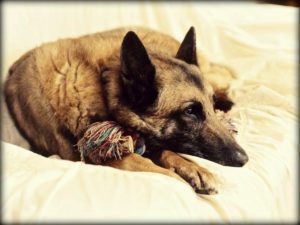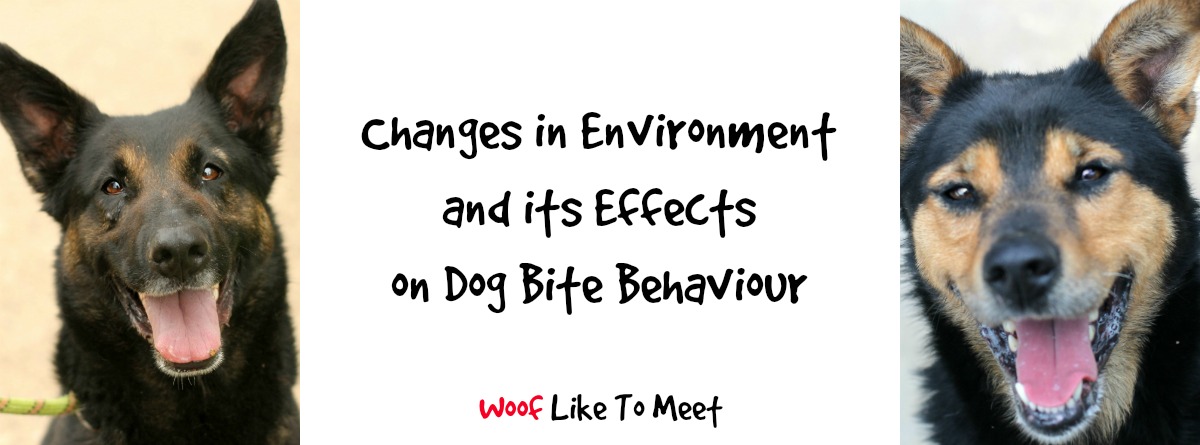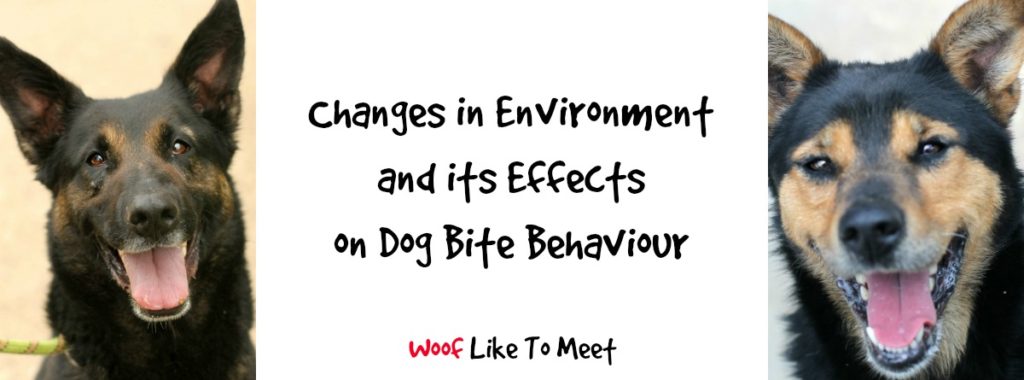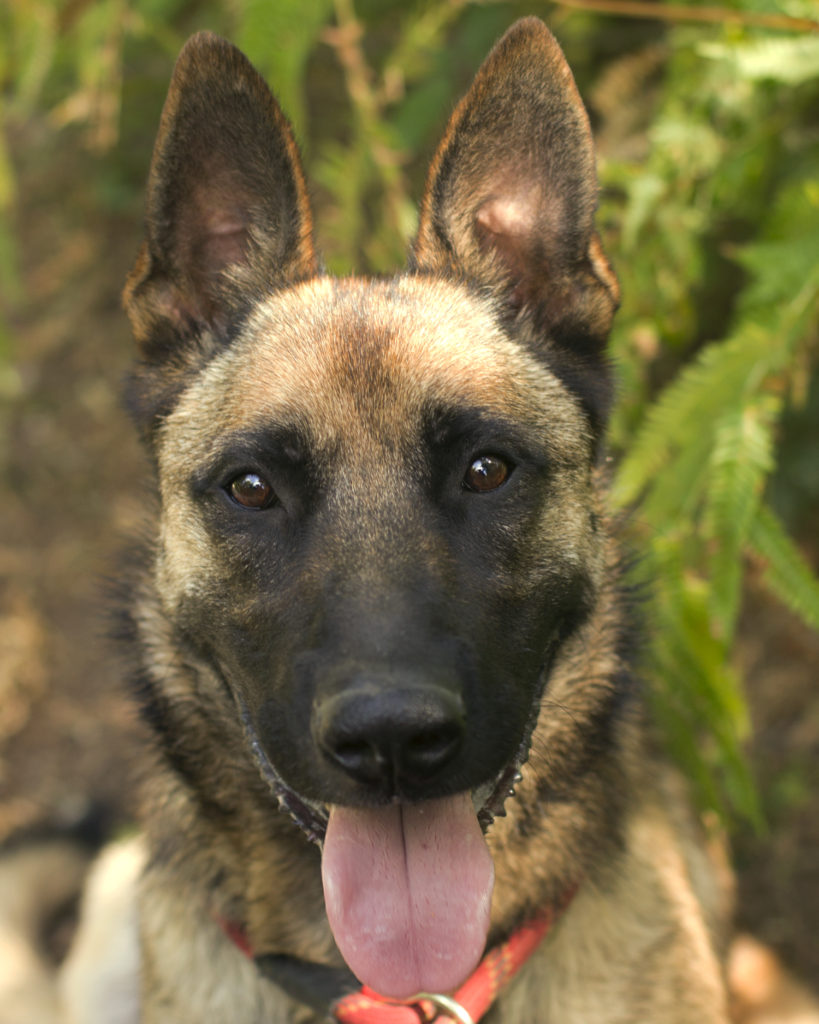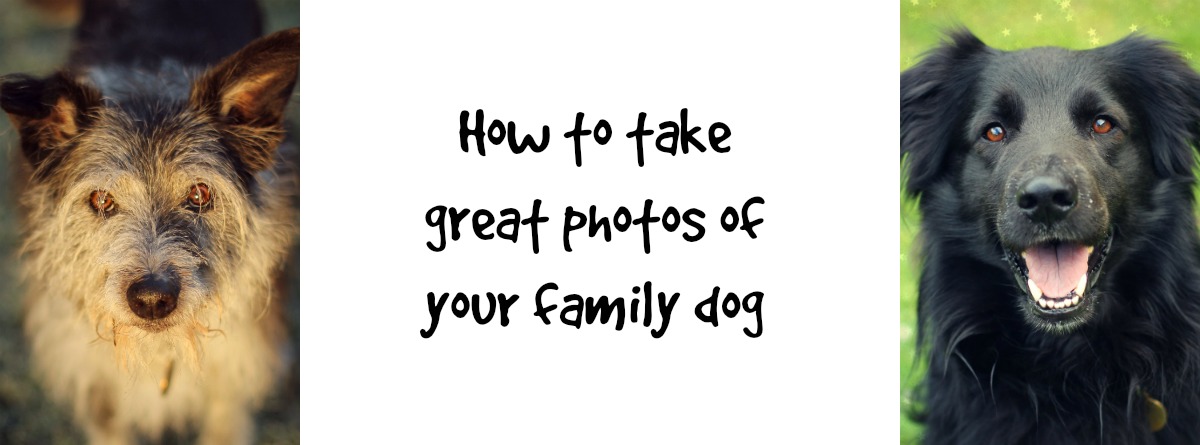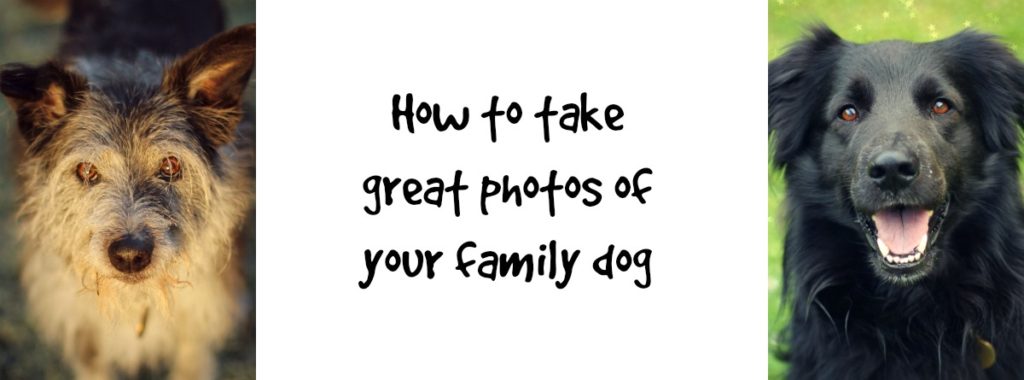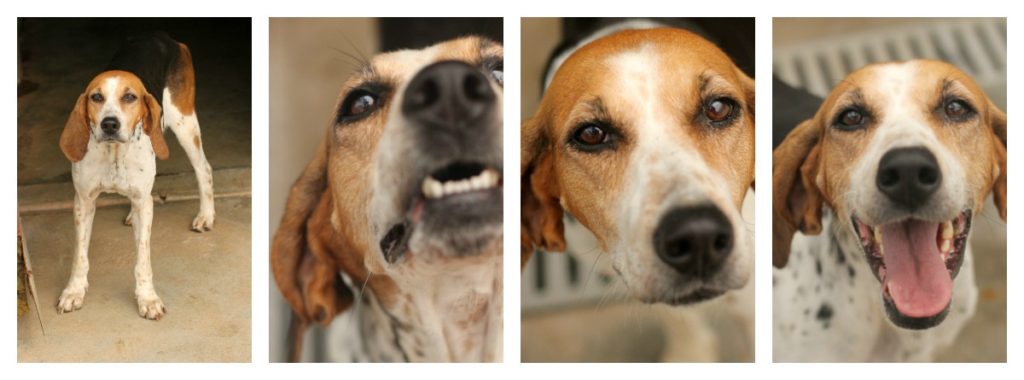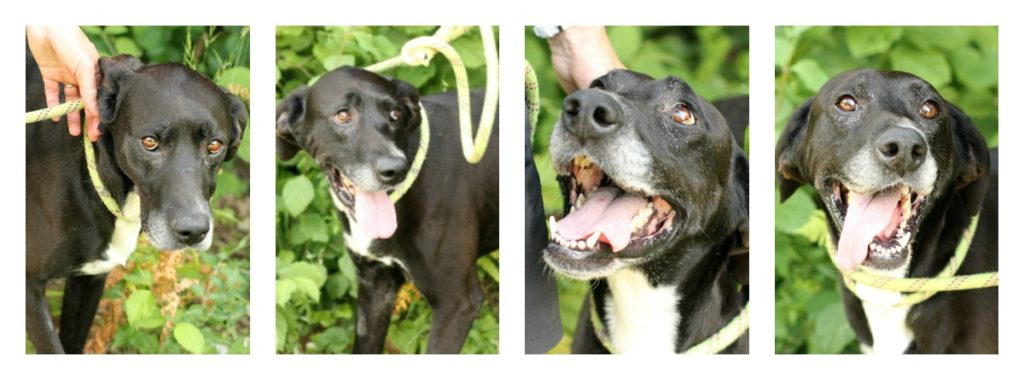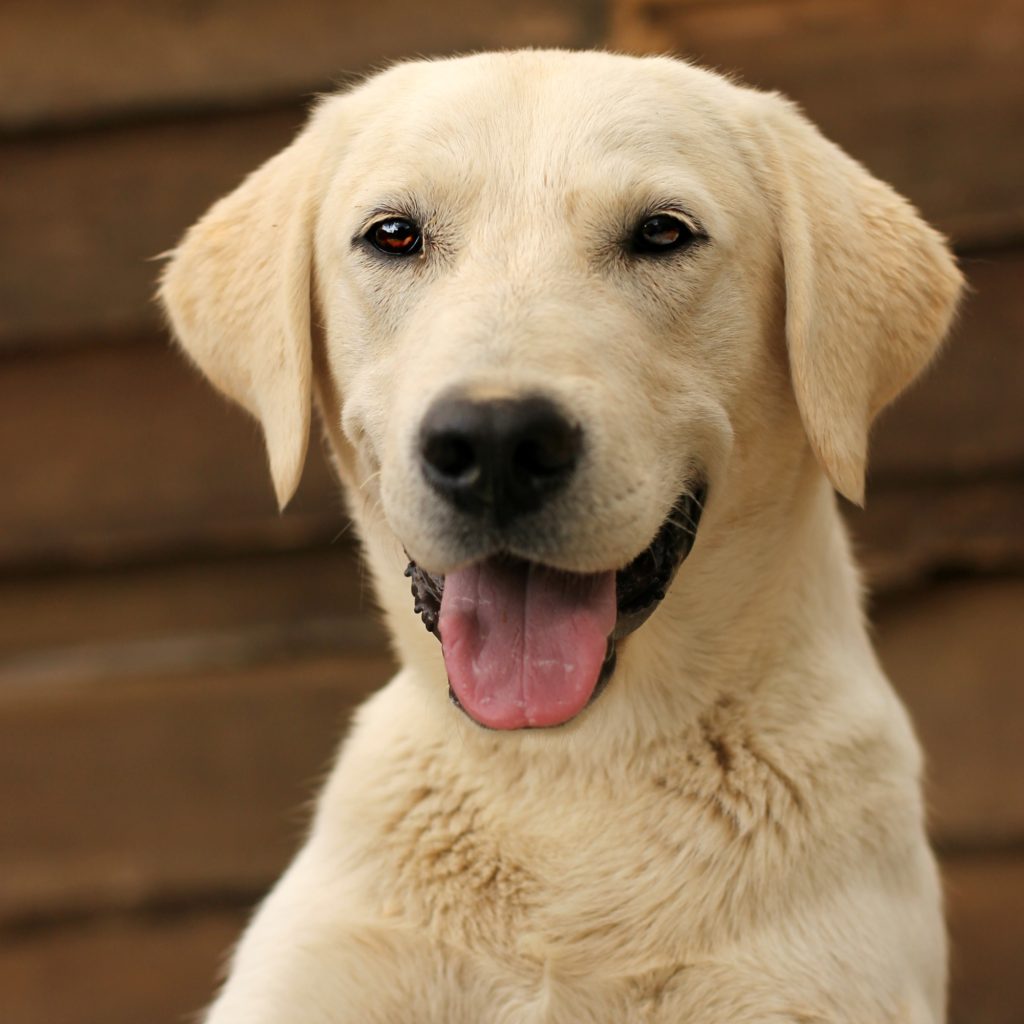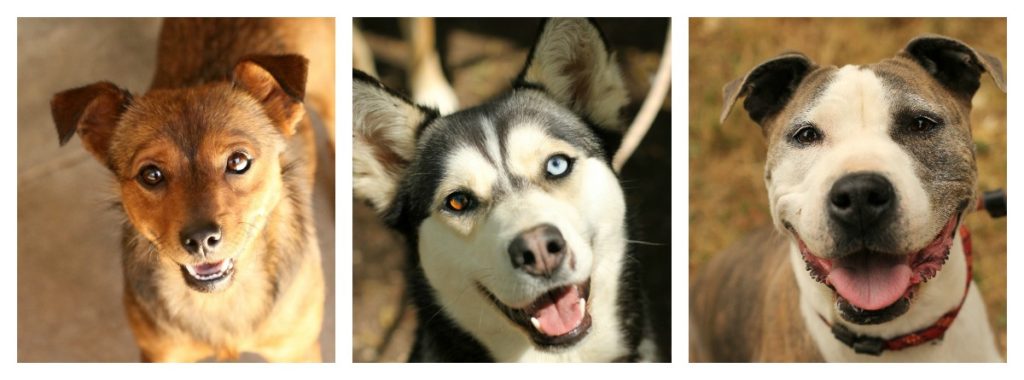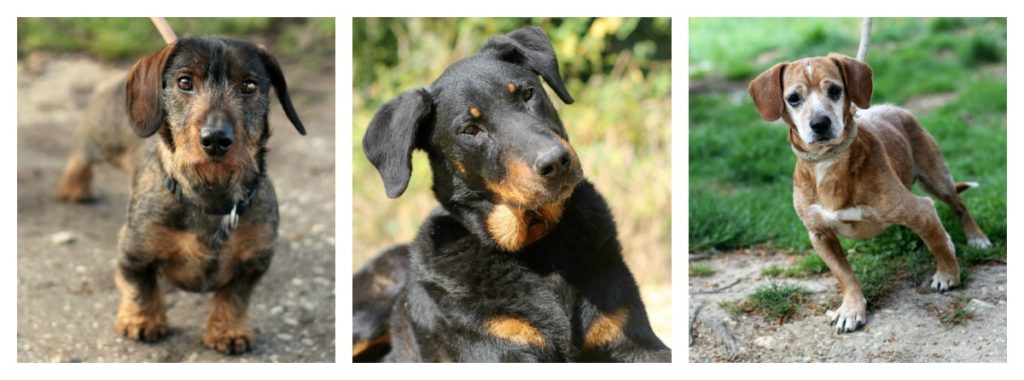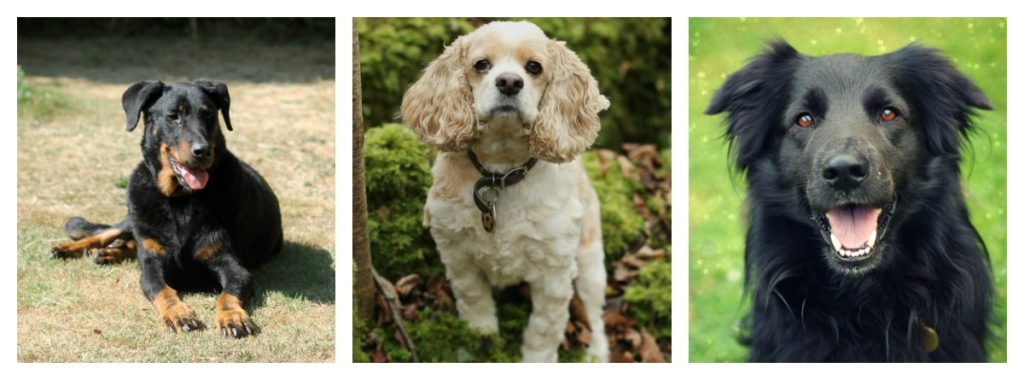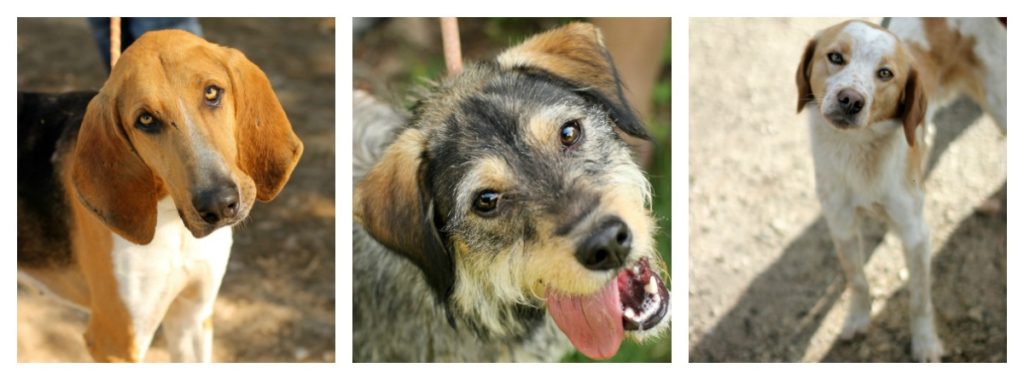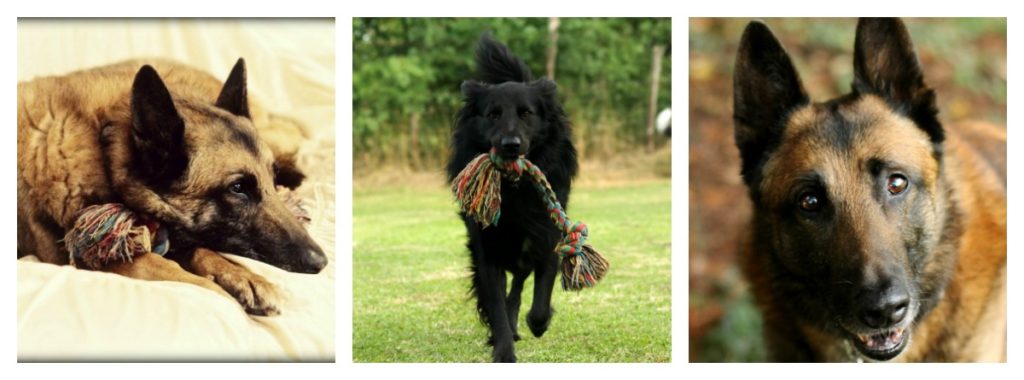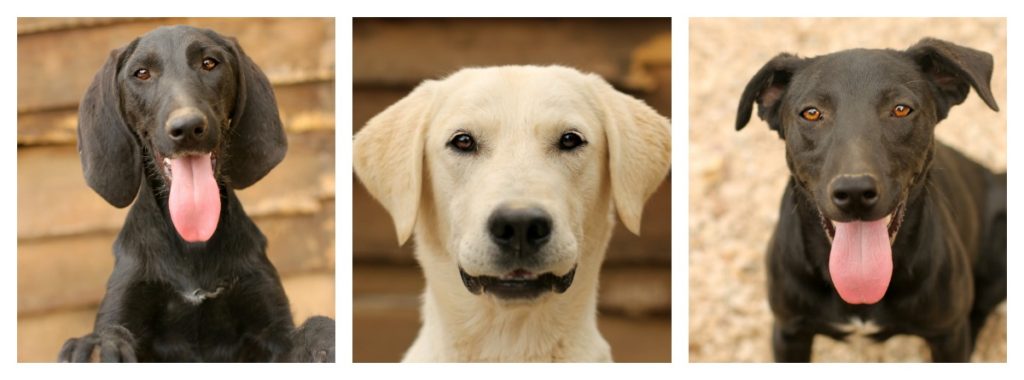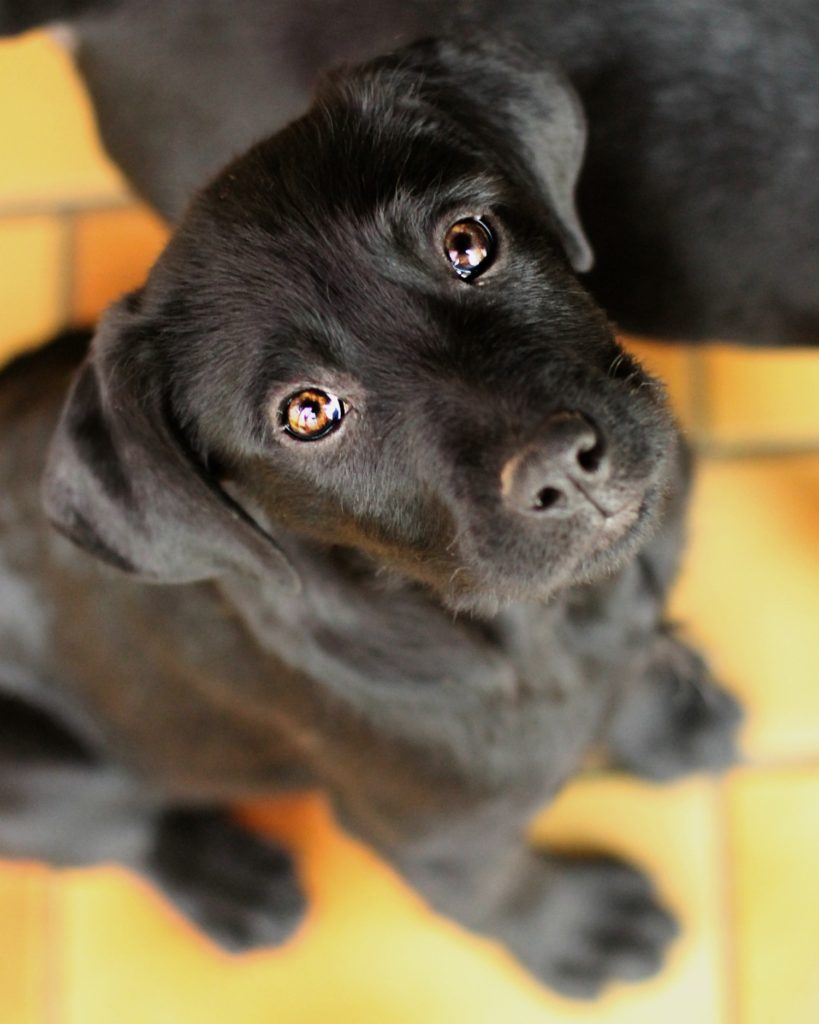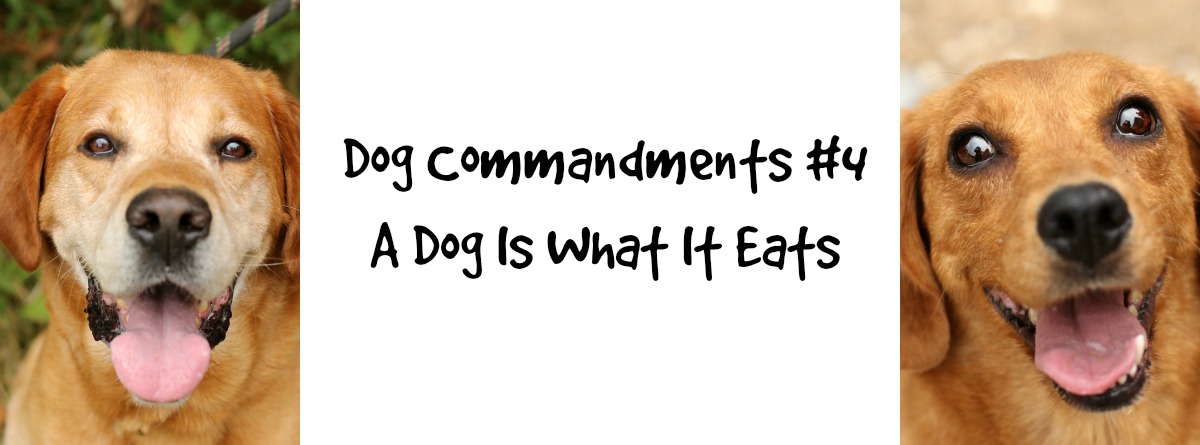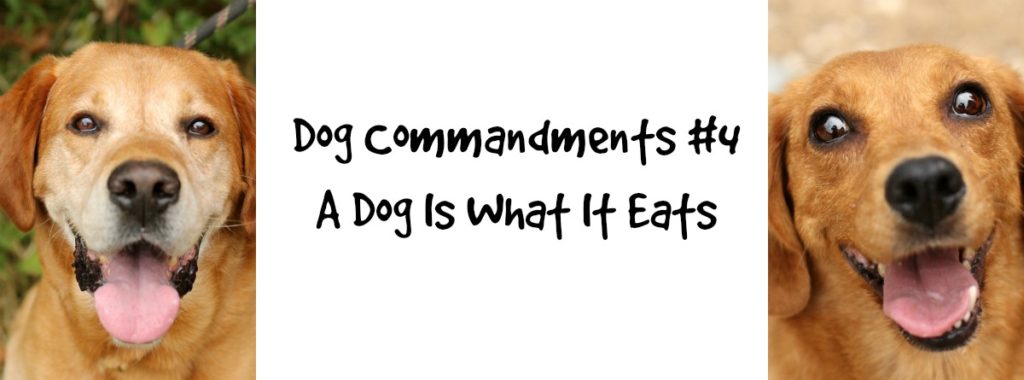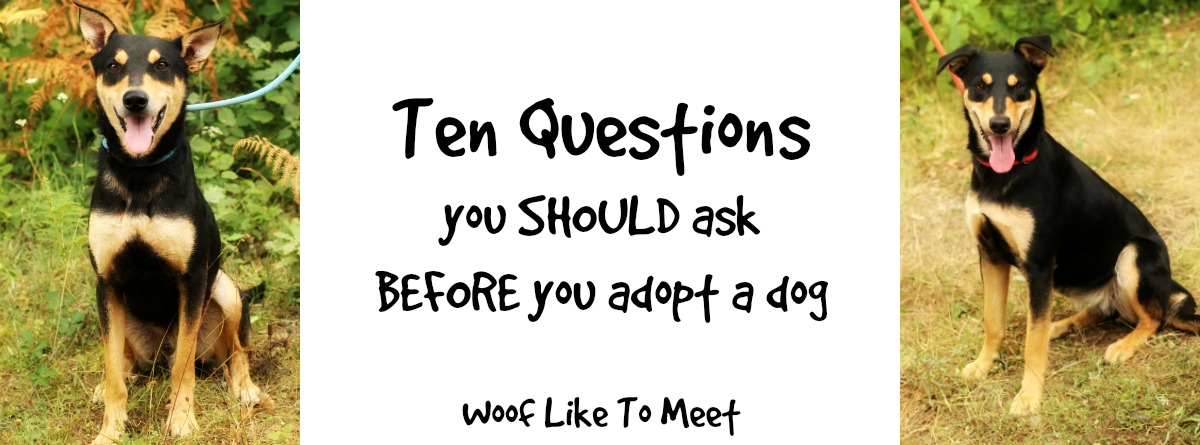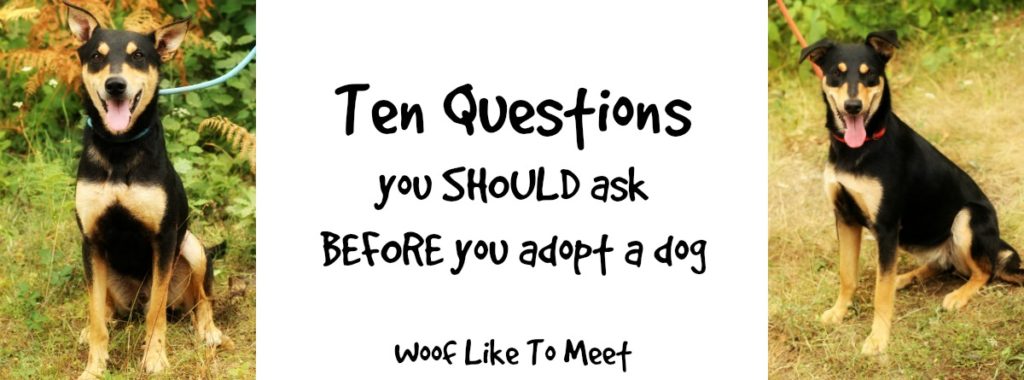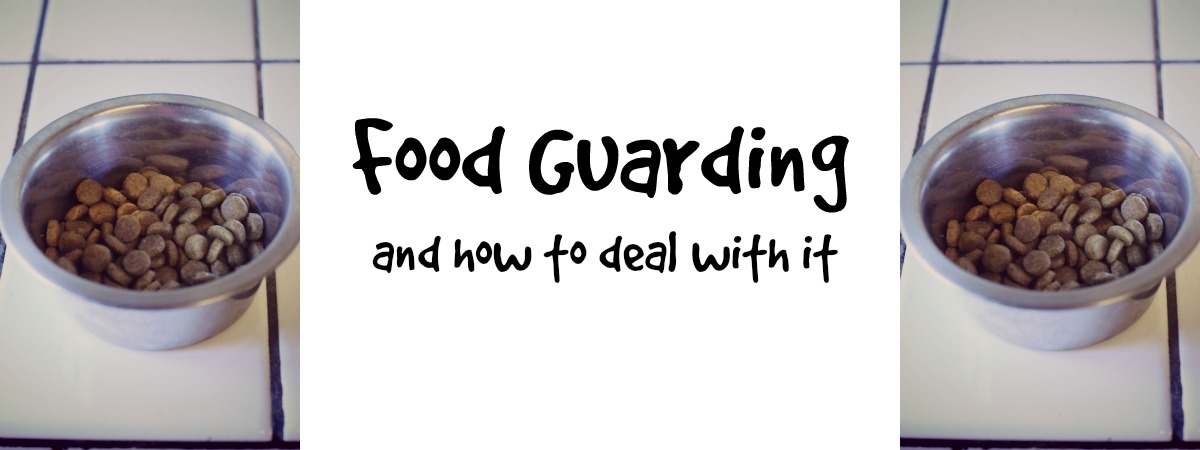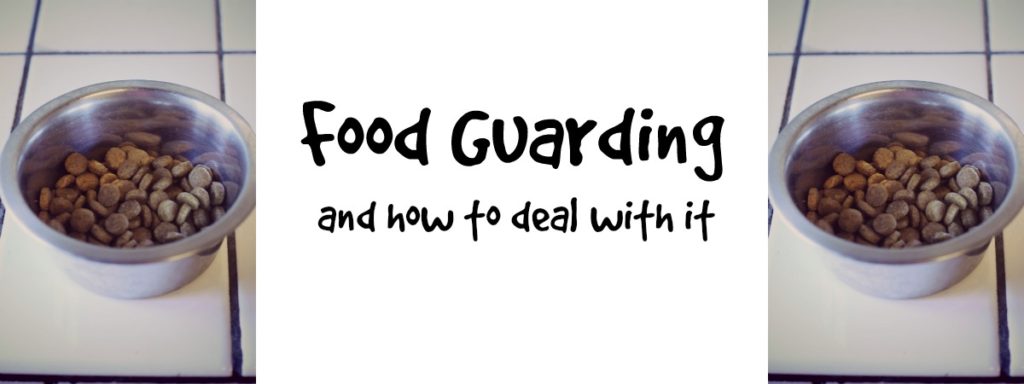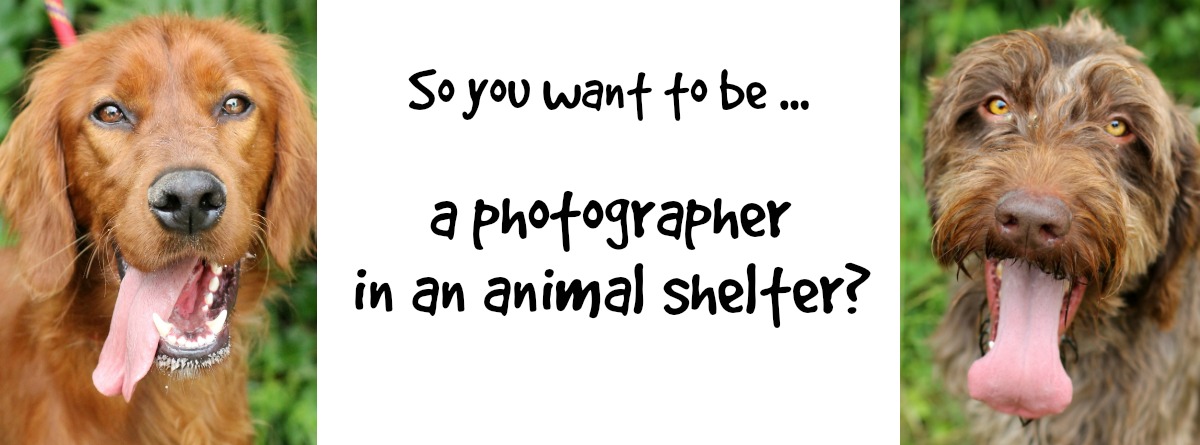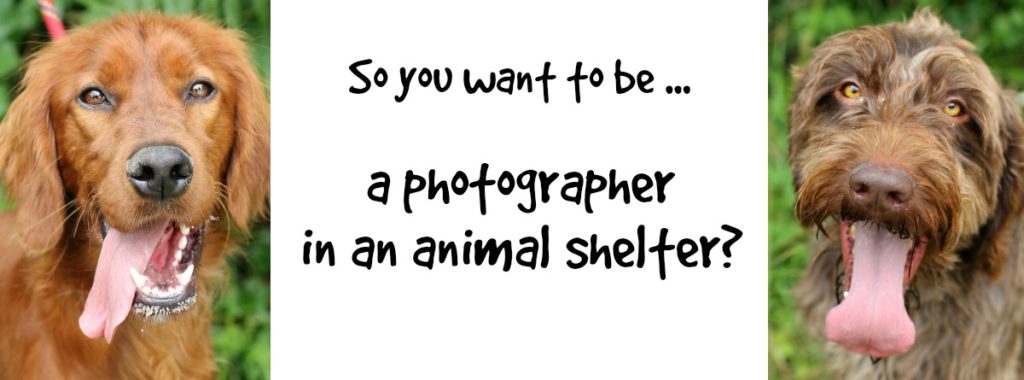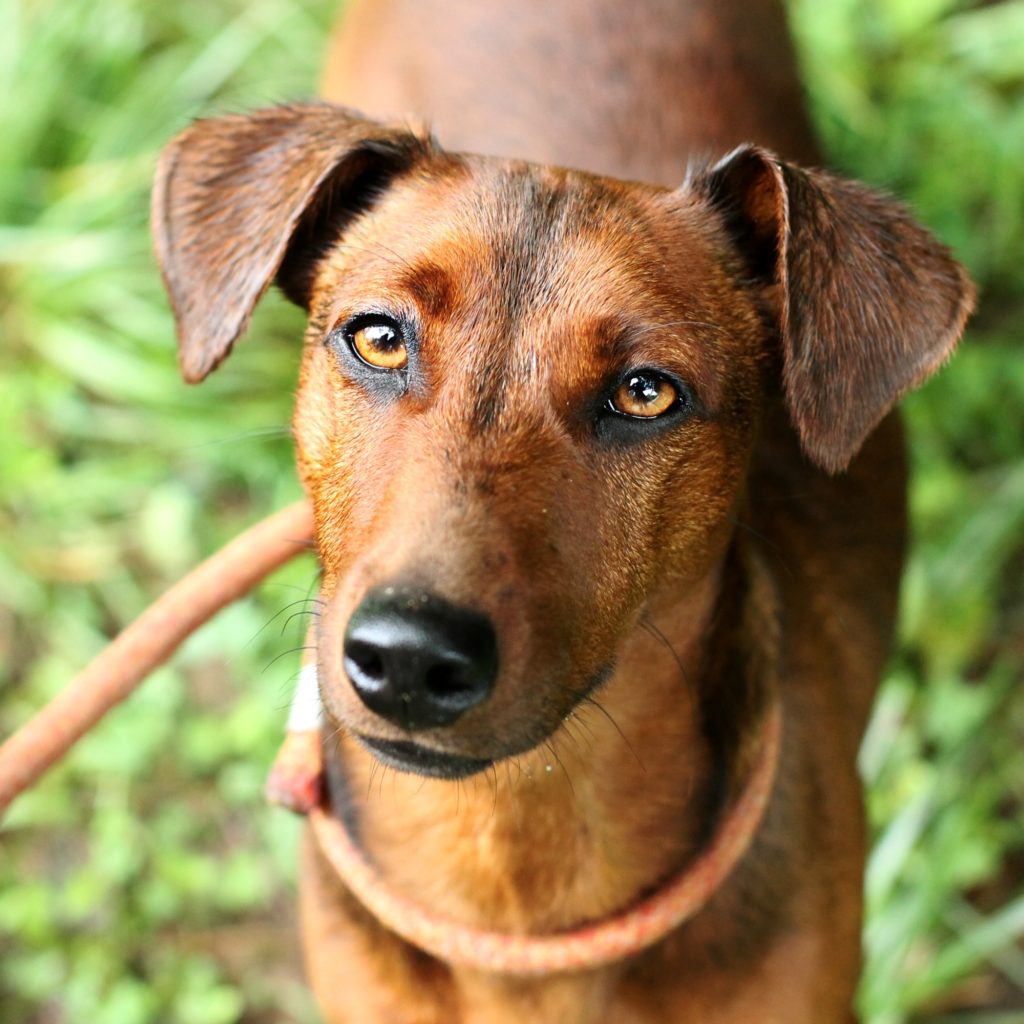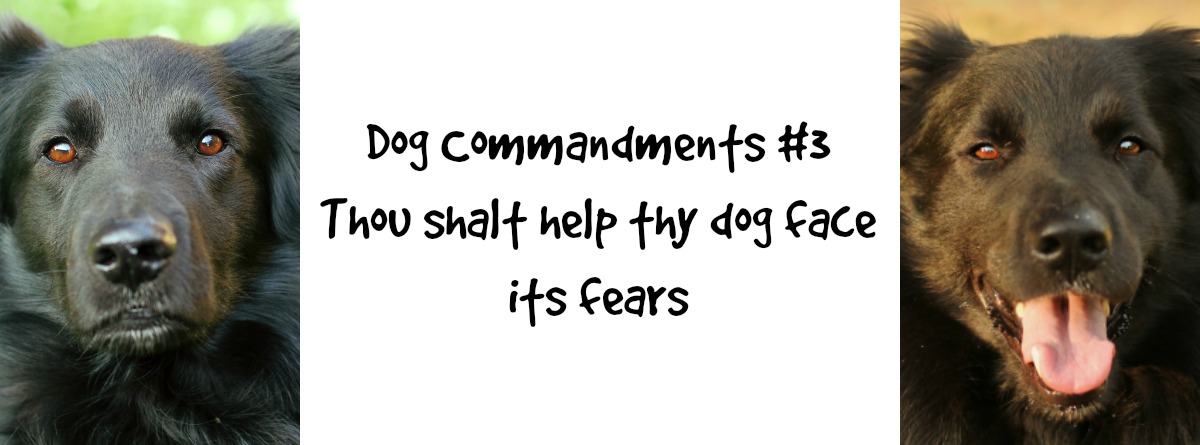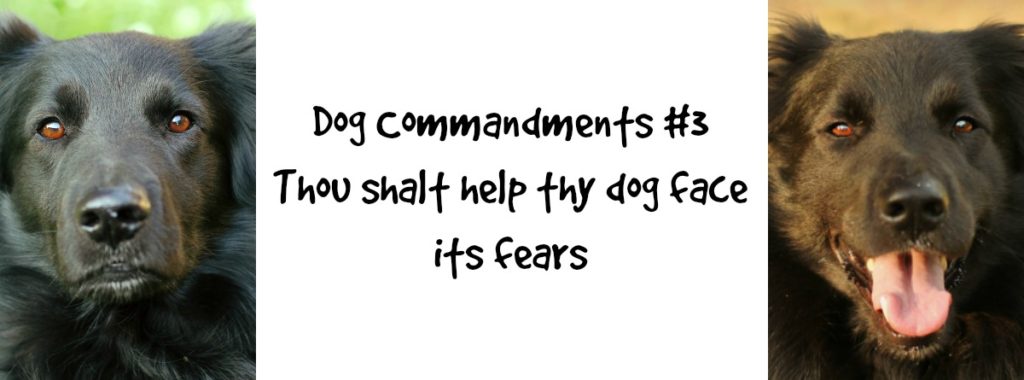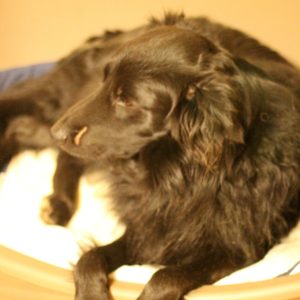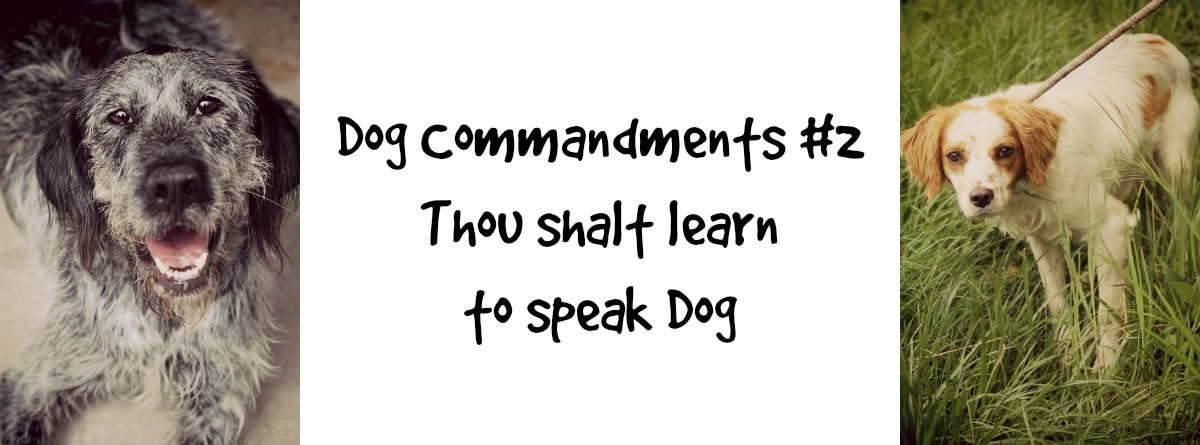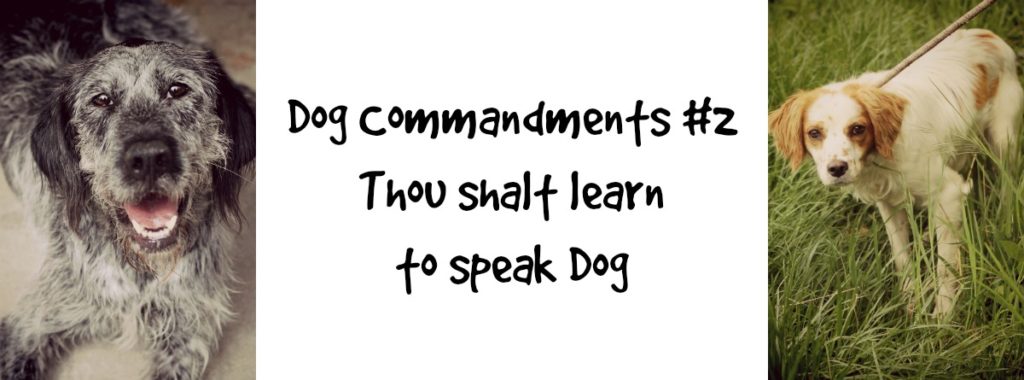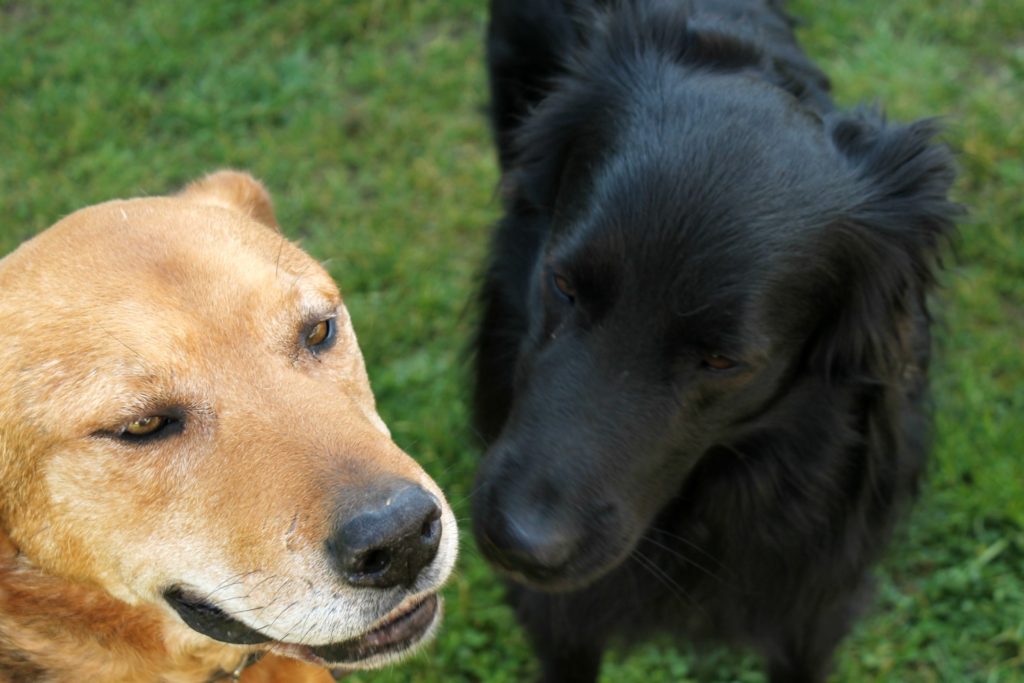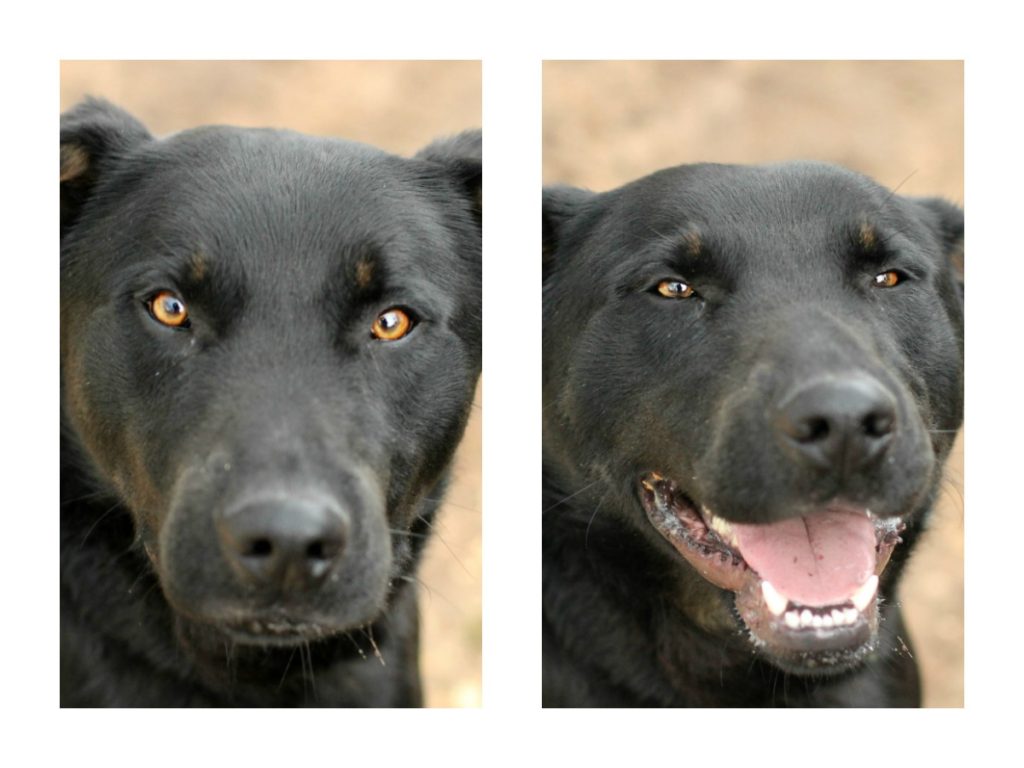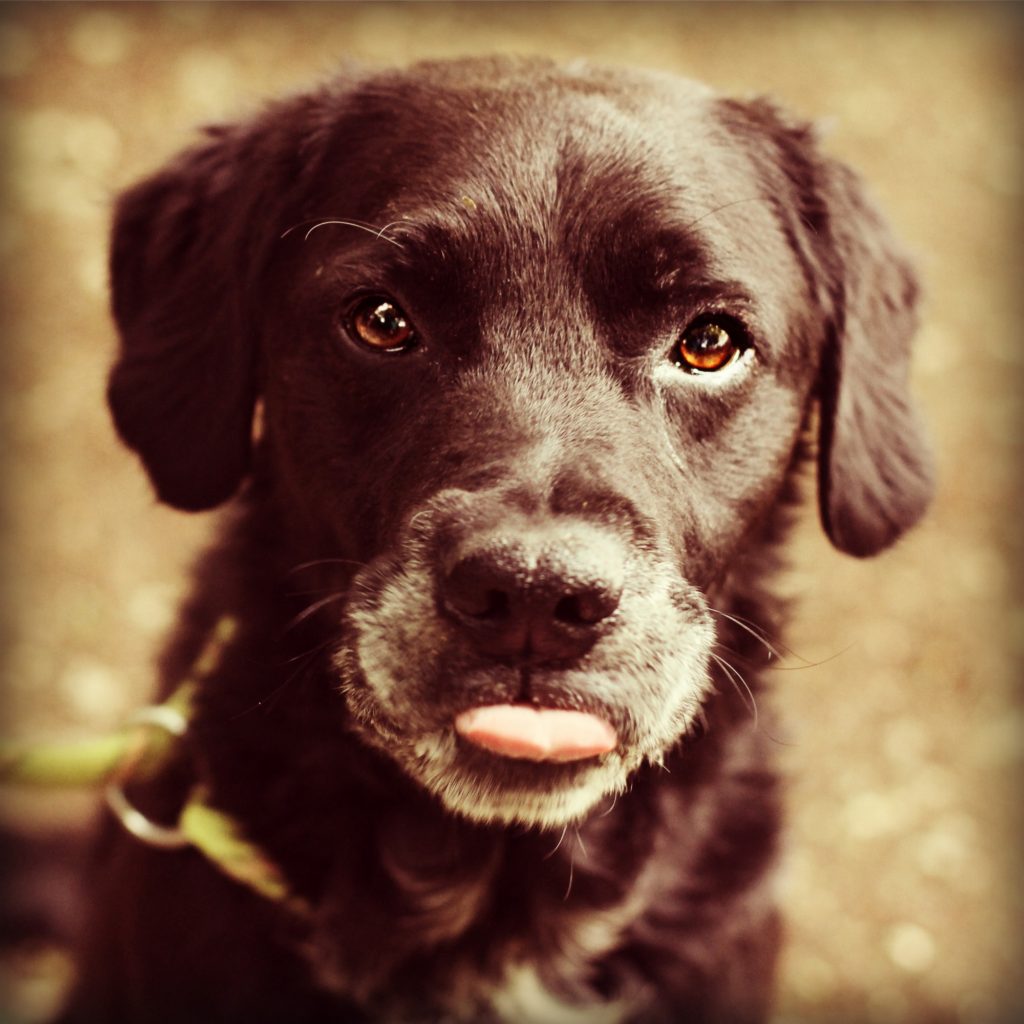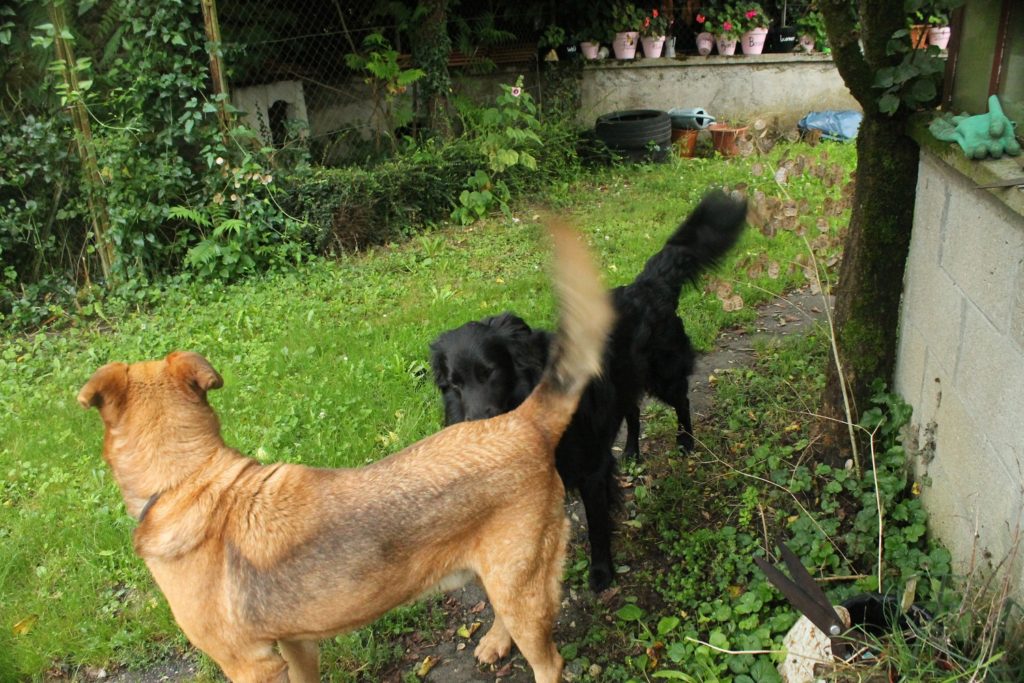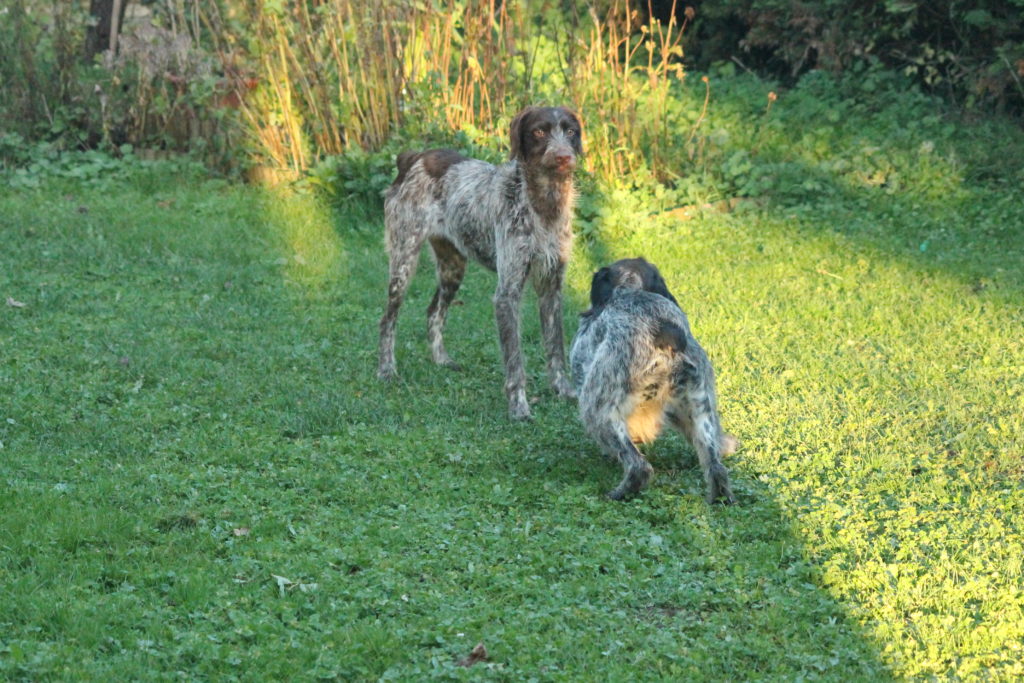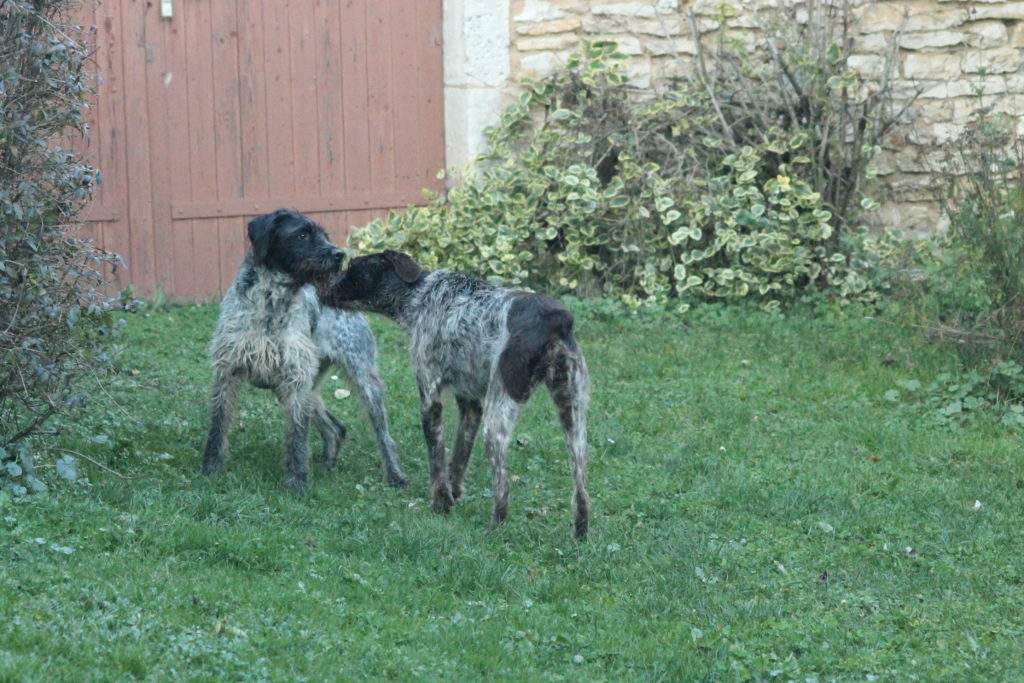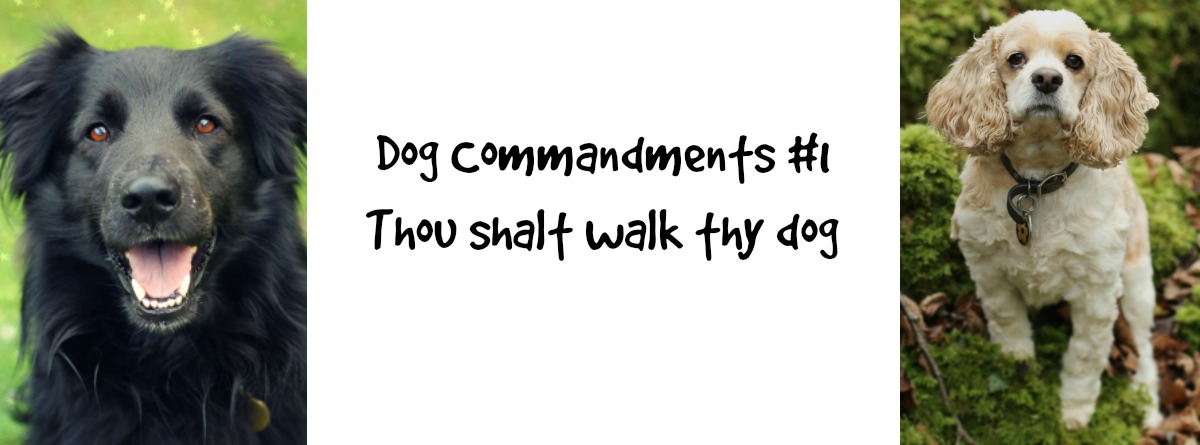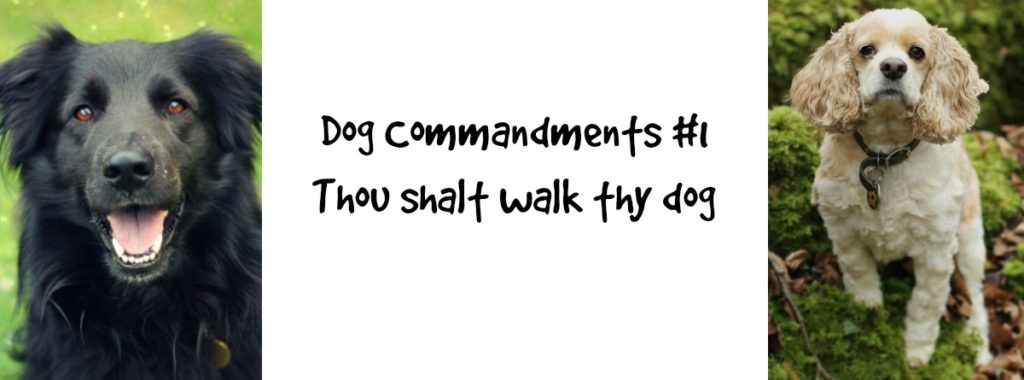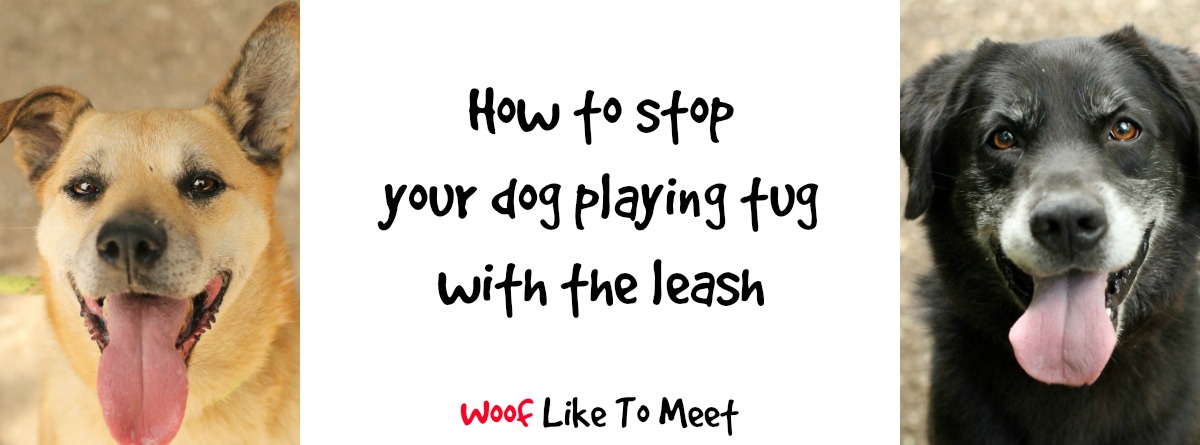
At the shelter, we have a number of dogs who get really, really excited before you take them out for a walk. Whether it’s circling, excited barking, jumping up or biting the leash, they’re behaviours that dogs find very rewarding but can also be dangerous. For some of those dogs, they are so excited that they end up biting their walker. These are not behaviours that are isolated to shelter dogs, though, and I see plenty of frayed leashes and chest-height mud-prints that show lots of owners have similar problems in the home.
In the home, you may find that your dog quickly associates the putting on of shoes or the picking up of keys or a leash to be a predictor of a walk. And when we know we’re about to do our most exciting thing of the day, what do we do? We might bark. We might circle. We might decide that the leash is a marvellous opportunity for a game of tug. We might be much harder than usual to bring back down to a level where we are a thinking dog, not a reacting dog.
The thing about excitement is… it’s like a big wad of €100 notes. You’ve got lots to play with and you’re like a gambler at the roulette wheel. I call these ‘Excitement Dollars’. Those dollars accumulate through natural energy levels, age, genetics and associations. Some dogs are Excitement Dollar Paupers, turning up with a few to spare when there’s a walk on offer. And some are Excitement Dollar Millionaires who seem to regenerate those millions in minutes.
Take your average doggy pensioner who came from great doggy lines (no crazy-eyed loons in the old family tree) … a pensioner who’s pottered about the garden all day and is sprung a walk from out of nowhere. Well, there’s fairly few dollars available there.
But take a one-year-old Breton spaniel with excitable parents, negligible training, who’s had a nap and had food and can see people walking around with leashes… who knows that after sleeping and eating and cleaning, people come with leashes and walk him… it’s 2pm and he is BOUNCING with Excitement Dollars. One huge wad of excitement dollars.
Between those two, there are a million different dogs with different amounts of excitement stored up when a walk is on the cards.
Until that wad of excitement is down to a manageable level, you may find that your dog simply won’t listen to you. And if you close the roulette, they’re just going to go and try and spend it at the dice. In other words, you may well deal with leash biting only to end up with a jack-in-a-box Zebedee dog on a spring.
Let’s not forget that a walk for many dogs is the highlight of their day. It’s an arrival in Las Vegas with a million dollars to spend.
Take my young collie x retriever cross Heston. Excitable genes, youth and a lifetime of getting used to my habits. Those dollars stack up quickly. Add shoes, keys and a lead…. 2 + 2 = TWO MILLION EXCITEMENT DOLLARS TO SPEND! It used to be that I couldn’t put my socks on, or even look as if I might put my socks on without frenzied barking and circling. Heston LOVES his walk. Now we’re at the point where he’ll wait until I’m at the door. It’s progress. Shoes are on, socks are on, teeth are brushed, keys are picked up and then we have a 30-second bark and circle burst until we’re out of the gate. To be honest, it’s not perfect, but I can live with it.
Part of the process is realising that sometimes, we’re paying out dividends on those Excitement Dollars. Whenever I get excited, whenever I put on my shoes, whenever I put my keys in my pocket, it’s like I’m that roulette ball slowing down and getting closer and closer to PAYDAY!!!! Those cues that a walk is on the cards give a dog even more to spend. Sometimes, they’re the reminder that they’ve got two gazillion Excitement Dollars burning a hole in their fur.
What worked were removing a lot of the cues and also repeating a lot of the cues. I had to stop giving Heston more dollars to play with. I wanted him to understand that me picking up the keys didn’t mean that he was going out. So I picked up my keys a hundred times a day and made for the door. I rewarded calm behaviour and Heston quickly picked up on the fact that keys didn’t always mean a walk. I did the same for my shoes as well. And then I did the same for the lead.
He still gets a bit excited when I pick up a lead but he’s still biddable and his excitement dissipates quickly once he realises we’re not going for a walk.
I walk Heston for 4km at least once a day and mostly twice. At least 2km of each walk is off-lead unless there’s a reason to put him on the lead, like other dogs or joggers. He runs for that time and a lot of it is at full gallop, chasing swallows or distant rabbits. I want those dollars spent, please. We do scentwork, agility and obedience for a good thirty minutes at least every other day and we play fetch a lot too. More expenditure. He doesn’t have as much exercise as he needs to tire him out, but he has more than many dogs and his behaviour as a result is pretty biddable. That’s a lot of work, but he’s not your normal dog. He came with a big vault of everyday excitement in the bank. I just had to find more ways for him to spend it.
Still, that’s a dog in a home, who doesn’t have 200 other dogs barking at him, circling next to him, snapping at him from behind bars. Talk about other dogs giving you a payday! Heston’s a dog who is exercised in the day, has obedience training and an owner he can bond with. For dogs in the shelter, it’s a bit different.
Imagine your dismay at walking past a house with a reactive dog behind a fence. And then times that by at least thirty that you have to get past before you can get out for a walk. Imagine the excitement of your dog if you’ve had a couple of days off from a usual walk, or your dog who hasn’t had any way at all to let off steam. Those dollars have just been sitting there gathering interest unless they found a way to spend it themselves, like racing a figure-of-eight in the garden or digging a giant hole.
Our dogs at the shelter, even if they go out for a walk every single day of the week, only have a maximum of 30 minutes of one-to-one with a volunteer. That is a very short amount of time to expend all that excitement. This is what life is like for Regis, Estas and Hagrid. No wonder they’re bouncy or leash biters. When I had a couple of weeks of high temperatures and other shelter work to do, I realised Hagrid had not been walked for ten days. Other than a bowl of food twice a day or occasional people who stop by, or the staff who bob in for a few minutes, Hadrid had perhaps two hours of human contact and two hundred and thirty-eight hours with no contact at all. And we wonder why he is so excited to see a walker that he’ll launch himself off the ground, bite at their hands or air-snap at the other dogs as he’s leaving the site for his walk. Just think of all those dollars sitting there, waiting to be spent.
I have a confession to make too. I have, in all my years walking dogs at the shelter, only ever ‘lost’ one. His name was Jony. He was a one-year-old beagle who needed to blow off some of that excitement more than others.
Let me describe what happened, because it’s very relevant here.
Jony came to us with a good level of obedience. Here he is doing a sit when he first arrived. What a great, attentive, focused dog!
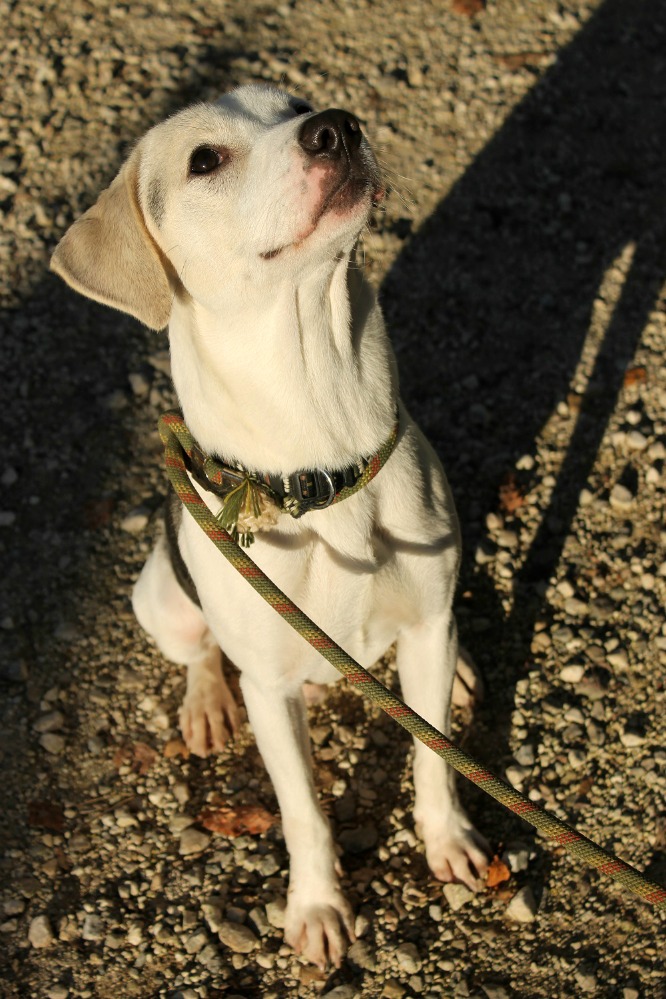
Soon, though, all that excitement and lack of stimulation got a bit much. Normally, for safety, we lasso the dogs from one side of the gates with a slip lead. We’d use harnesses but with 200 dogs on site, we’d need 200 good-quality harnesses of varying sizes. I’m not sure if you’ve ever tried to fit a harness to an over-excited Anglo who’s not used to touch, or a fearful Ariegeois who doesn’t like to be cornered, or an untrained shepherd who’s a bit mouthy. Ethically, my heart is with harnesses. Practically, slip leads fail less than the alternatives and they fit all. I don’t like it, but that’s how it is. A dog can easily slip out of a harness if it’s not fitted properly. I don’t believe haltis are a solution for our dogs. We don’t use flat collars because we can’t leave it on a dog as they can accidentally hang themselves far too easily if a collar is on. Jony was just new in, which is why he still had his collar. Usually, collars are removed. Only very few dogs have a collar. They are never housed with another dog and we have to be very careful that there are no pegs, nails or edges that a collar could get stuck on. Thus, every time our dogs go for a walk, a pair of hands materialise and offer them a cord slip-lead. Or, in doggy terms, what looks like both a walk and a great tug toy all in one.
Anyway, fast forward twelve months. Jony had been getting more and more frustrated. Once, he learned that the fabric slip-lead coming at him through the gate was actually a very great game of tug. We see us trying to lasso an excited dog. They see a human being offering a game of tug. For that reason, I went in to put Jony’s lead on inside the enclosure. Usually we avoid doing this because dogs can rush out. You don’t want a loose dog on site with dogs being walked, with cats on the prowl… you just don’t. So I went into the enclosure to get Jony. Bear in mind, too, that we have to make a choice. Go in and you risk an over-excited dog putting their teeth into your body if a leash is not on offer or even if it is. I got a slip leash on him, and he grabbed the leash. Thus, the leash wasn’t securely fastened and every time he tugged or shook his head, he was actually getting looser. The only reason he was still “inside” the slip leash is that he was enjoying this wonderful game of tug. I put another on him and he did the same with that.
You can see how this is also a vicious circle, because which volunteer wants to walk an over-exuberant dog who’s hard to handle on the lead? It’s the same reason that people stop walking their excited dog: no matter how much you want to, the situation is a nightmare, so you just try to avoid it as best you can. We do the same at home. Hence why many people also let their dog off the leash when really they shouldn’t. If leash skills are poor, we often either let our dogs walk off-leash, stick an aversive shock or prong collar on, or stop taking them out rather than deal with the problem. Poor leash skills are the number one reason for a whole host of poor decisions we make as owners.
Anyway, here’s Jony… And here’s Emma. And I’d just not realised how loose Jony had the slips, how his tug was the only thing keeping it on, and how he was one back up away from running off into the wilds. Which is exactly what happened. He dropped both leashes. He backed up. He was out. He was off.
Luckily, he did no damage and we got him back on in seconds. We were still inside the compound and the gates were shut. Plenty of staff were around to shout him over. He was such an affectionate guy that he went to the first person who called him, and we could then make sure his leash was absolutely secure. By the way, just because you’ve never taught a dog to play tug doesn’t mean they won’t do it anyway… although some dogs who’ve never been taught to have anything in their mouth have a natural aversion to doing so, and will probably exhibit another displacement behaviour instead like circling, leaping on you or barking.
So, for dogs who are over-excited, who leap, who tug the leash, who bite hands… what do you do? Here, I’m thinking about dogs who are not in a shelter situation, but is tailored for dogs who range from gentle over-excitement where you can easily distract them with a high-value treat or favourite toy, to dogs who are extremely over-excited and either have no training at all, no play experience at all or are too excited and focused to want to do anything other than play tug with the lead, jump all over you or nibble your hands. In this article, I’m just looking at leash biting behaviours and will explore jumping up and excited barking or circling in the next.
Leash biting
The simple solutions to this come in several forms and it depends very much on the level of excitement your dog is presenting as well as the level of obedience training they can demonstrate at this moment.
If your dog knows how to play and has some obedience training (even just a sit) the first thing that will make a real difference is to expend that energy before you go for a walk. A dog who has lost that initial burst of energy is less likely to want to pull on the leash and play tug with you. A good game of fetch, frisbee or catch is just a great way for your dogs to get rid of that burst of energy. Ten minutes followed by some simple routine obedience like ‘sit, focus, paw, down, stand’ and you’ll have a dog who has already worked a bit of their steam off and who is more in control of their choices.
You should think carefully about playing tug before a walk… sometimes it is exactly what your dog wants to do, and a good game of tug before a walk can get rid of the desire or need to play tug if your dog will tire of it, but if your dog is the type who can play tug for hours, you should avoid encouraging that tug instinct right before the walk itself. At least have a good period (at least five minutes) of doing something else. I do try to encourage a range of play from my dogs. Whilst I like them to have preferences, I don’t want those preferences to become obsessions. That is very true in this situation.
For dogs who will sit and can be distracted with a high-value treat or toy.
When the dog takes the leash in its mouth, simply ask them to ‘sit’ and do a couple of other things instead. If they start to bite the leash, interrupt them, ask for a behaviour and then reward it. Distract and refocus. You can use a high-value treat (like chicken, ham or turkey) or a favourite toy as a lure, but don’t give the dog the reward until they’ve done the behaviour you’ve asked for.
In other words, distract with the lure, ask for a different behaviour, use the lure as a reward for the new behaviour.
Be vigilant and watchful, and as soon as you see your dog beginning to look as if they might bite, interrupt the behaviour, ask for another behaviour and refocus your dog. This builds up the connection with you and they’re paying more attention to you, and less to the leash. You can also “tease” your dog with the leash a little to ensure your dog understands that the leash is not a chew toy. Once you’ve done it a fair few times, offer the lure less frequently to get the behaviour and phase it out completely over time. Use it as a reward if they give the behaviour and transition that to a more intermittent reward over time.
You can see the first part of this in the video here: distract with a lure, refocus with a new command, use the lure as a reward.
I would caution however to watch for other behaviours popping out as ways to expend that excitement. You can see this dog will also need a little work to make sure that excitement is not popping out as a jump rather than tug-of-war on the leash.
Also, remember that the dog in the video IS easier and more biddable even after two minutes, because sometimes that’s enough for that burst of Excitement Notes to be spent. That’s why you could make LOADS of progress in one session, but it’s the beginning of the next session that will be vital, when you wonder why Johnny has forgotten exactly what you did the session before.
What about dogs who are too excited to be distracted with even half a leg of lamb or the best of frisbees?
Pre-walk exercise is really, really important here. I can’t stress that enough. Don’t use your walk as exercise with a dog who is over-excited. Let them burn it off a bit and you’ll have a biddable dog once more. Otherwise you’ll find yourself in a no-win situation.
You also need to avoid all the cues that a walk will happen. If you put your shoes on and your dog knows, put your shoes on at the beginning of the day, take them off, put them on, take them off… you get the picture. Break every single clue that your dog can use to get excited.
The third thing you should do is think about the type of leash, harness and collar you are using.
Anything that has to go over the head (and is thus presented face first to the dog, like a slip lead) is more likely to be something they want to chew. The same is true of a front-clipping harness. Haltis for dogs who bite the leash can be very frustrating.
The best solution for a dog who bites the leash is to have the leash out of the dog’s mouth area, so a leash that fits to the top/rear of a harness is the best solution. If the dog can’t reach the leash easily, they can’t grab it to pull. It’s that simple.
The type of harness you fit is important too: you want to avoid your arms going near the dog’s mouth. A playful, mouthy dog who doesn’t have good control at that moment in time has a stronger propensity to bite and to present yourself to a dog in an excited state with poor bite control is a recipe for disaster. It must be quick-fitting and something you can fit from behind or above.
The best solution, until you have eliminated mouthing altogether at walk time is to keep the harness on for much longer periods, so that the harness itself doesn’t become associated with the walk ritual. For instance, fitting it immediately after breakfast and leaving on until you’ve walked your dog can break the habit of thinking ‘harness = walk’. For this reason, it should be a high-end harness that does not rub and does not give your dog anything to chew. For those first few days, supervise your dog very carefully to ensure they are not chewing the harness during this time.
For over-excited dogs, I cannot stress enough the need to have a securely-fitted harness. They are more likely than many dogs to make a bid for freedom. If you’re lucky, like I was with Jony, no harm will come of it. If not, an over-excited dog could run into traffic, could chase another animal or could simply run off.
I’d also advise you to wear good gloves. They will shield you from nips and will make it easier to control the leash.
Having chosen a harness that is less easy to chew, you will then find it much easier to present your dog with great choices to bite, mouth and chew instead. Don’t expect that mouthy energy just to disappear: an excited dog wants to use its mouth to express its excitement, just as some dogs bark or circle. Encourage them to have something in their mouth and you will find your job much more easy. That can be a treat or a toy. I find toys work better here as the energy levels are higher.
Why do you think my Mali Tobby ended up with a toy at the shelter? Because he was a mouthy leash biter who thought he was being presented a toy.
As a consequence, he was given a toy. Tobby loved that toy. He’d only put the toy down to eat, and that toy-habit is one he still has. That came out of our need to stop him biting at the slip leash when it was presented to him.
The tactic here is exactly the same: ‘distract and refocus’. You distract with a toy, especially one they are happy to carry, and you can begin your walk in peace. Be prepared for them to drop the toy after a couple of minutes as their excitement level drops though. That toy will stop being a great thing to carry the minute that first burst of excitement is gone, I bet you.
Absolutely never walk a dog like this until you’ve got rid of that energy burst though.
I also want to take the excitement out of the leash. Here’s Emily from Kikopup showing how to do it with a young pup. I would do this AFTER the walk when the dog is calm and relaxed. And I am really, really with her about using a partner to help if it’s very challenging indeed.
What about dogs who’ve never learned to play, or have no obedience skills and have taught themselves tug?
We have a number of dogs adopted every year as adults who have never learned to play. I have four of my six who have never been taught (or appear not to have been). Tobby will carry a toy but never give it. Tilly only cares if her toy has wings and feathers and goes by the name of ‘pheasant’. Mimire doesn’t care for toys and Féfelle wouldn’t know a toy if it bit him. Heston dropped every single toy in his possession at Féfelle’s feet and Féfelle was completely disinterested. Worse still, though Tilly and Tobby have obedience training, Mim and Féfelle don’t. What do you do with a big lump who has no training?
Surprisingly, most dogs who don’t do toys don’t actually understand tug. It would never cross their mind to put something in their mouth in that way. That’s what it is like with Hagrid. He never, ever grabs the lead and though I’ve tried all sorts of toys with him, it all means nothing to him. Féfelle is the same. Don’t understand toys = don’t think a human will ever play tug with a bit of rope. I mean, why would you?! I don’t go up to Japanese people, drop sticks at their feet and expect them to Morris Dance.
For these dogs, they may pull, they may bounce, they may bite through displacement, but they don’t often put the leash in their mouth and play tug.
Worse is with a dog who has taught themselves to play tug but don’t have any other tricks in their magic box and/or you don’t have the facilities to allow them to expend that energy.
The first thing to do is to teach them some skills. Féfelle doesn’t do sit. But we’ve done ‘focus’ and we’ve done ‘follow me’ and ‘play bow’. Even six-year-olds with nothing have something they can learn. At least with this, we can get somewhere.
The second thing is to condition calmness around the leash, as shown in the Kikopup video. Again, a partner is a really valuable tool here so that you can add some distance. You want a calm, non-stimulating environment when all those Excitement Dollars have already been spent.
When I’m attaching a leash in these circumstances, I want to make sure that we are in closed quarters and that it doesn’t matter if I drop the leash. This is precisely what I’m going to do. I’m going to drop it. Instead of participating in the super-fun walk-tug game, I’m opting out. I’ll even go and stand in the corner and face away from the dog. I’m so totally not interested in that game of tug. And tug is only fun when someone is providing resistance. I’m going to drop that leash as soon as the dog’s mouth makes contact with it. I’m going to turn around and I’m going to ignore any jumping up or barking, or other ways this frustrated dog is going to get me to interact. If I bend down and the dog goes for the leash, I’m going to stand up, back off, disengage. The very first time I get hold of the leash and the dog has not got the leash in his mouth, I am going to give him such a massive celebration that he is going to forget about the leash altogether. I’m going to keep the dog in those close confines with the leash, dropping every time it looks like becoming tug and reward every time the dog doesn’t. I want this to be rock solid and I want to be absolutely sure that I can move it on beyond the closed quarters because dropping the leash is not something I want to do outside.
With Regis and Estas yesterday, I spent twenty minutes dropping the leash and picking it up, practising sit, habituating them to the leash itself. I didn’t get to the point where I walked them (they’d both been walked already anyway, which is great). I want to stop the leash being such a fun item so it becomes as meaningless as my t-shirt is. I say this with a degree of irony, having had my jean cuffs involved in a game of tug with a terrier puppy. Both Estas and Regis can sit, and they both responded to a tug rope and a toy too – they might be older gents, but it’s this precise combination of savvy tug knowledge and the stressful environment of the shelter that is leading them to ‘play up’ in this way. Like I said, dogs who have no toy or chew experience usually don’t think to pop the leash in their mouth. In all the times I’ve walked Hagrid, when the leash is accidentally in his mouth, he’s like a young horse in halter for the first time: he can’t get it out of his mouth quick enough. But then Hagrid doesn’t respond to a ball or ever walk around with a toy in his mouth. Luckily, dogs who know toys often know some obedience (both Regis and Estas can sit when asked) and that makes it much easier to teach them to stop tugging the leash when we walk. It’s the dogs who don’t tug – who circle, bark or jump – who often have little by way of training and who face a bigger battle.
I’m looking forward to continuing with them as well. They’re both lovely dogs who just have a lot of excitement to expend.
Hopefully with these tips, you’ve got a good range of ideas to help you manage leash biting and reactivity. I promise to make a video of a couple of our worst leash biters (and sorry Kevin and Emily, but they make your dogs look like stage props!) and demonstrate how these techniques can stop frantic tug-of-wars with a leash that can end very badly indeed.

